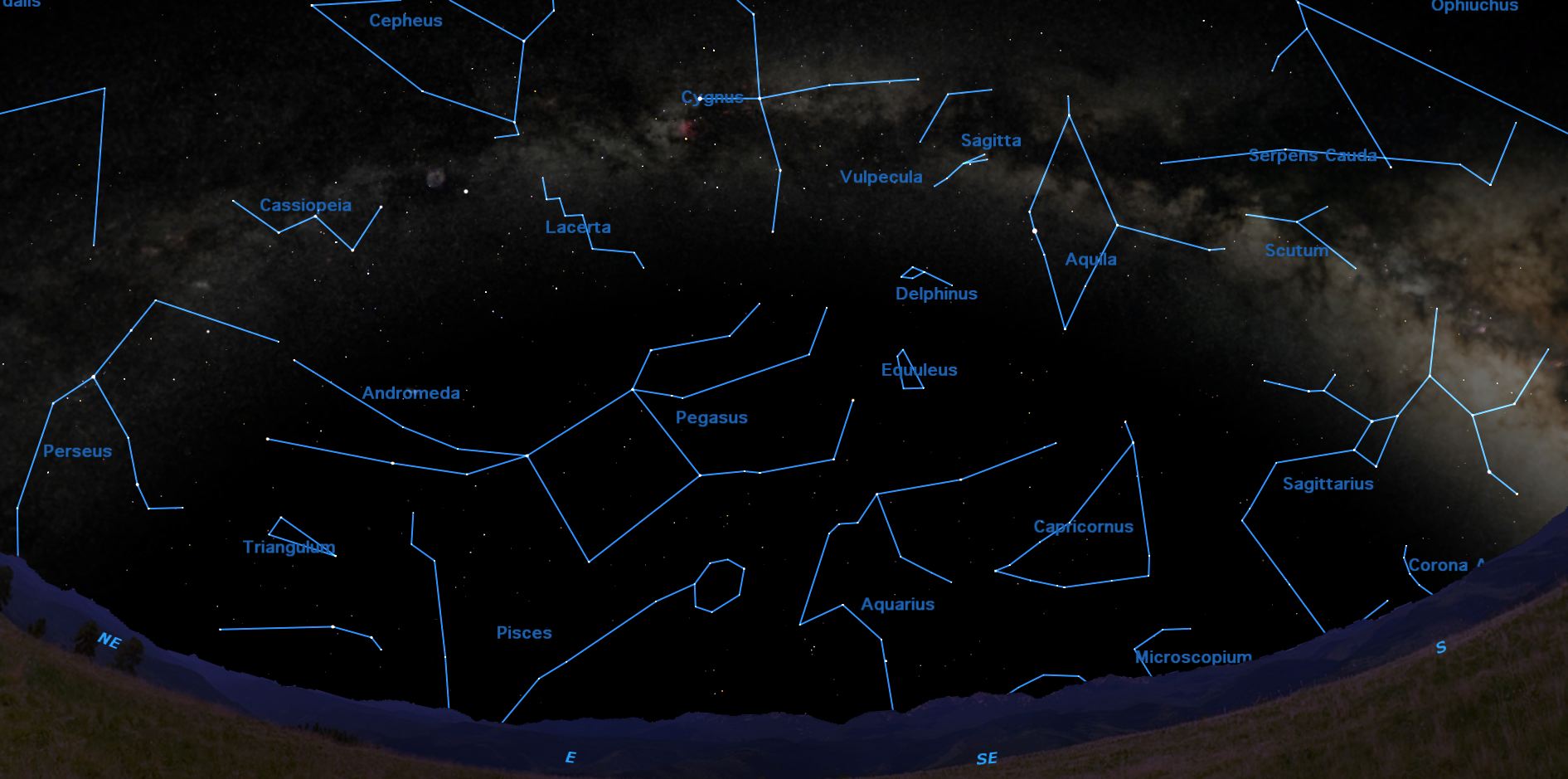 | |||||||||||||||||||||||||||||||||||||||||||||||
| For education orders please call 1-877-290-8256. Welcome to the August Third Week Featured Article! The Northern Milky Way Geoff Gaherty, Starry Night EducationLate summer is one of the best times of year to view the full splendor of the galaxy in which we live, the Milky Way.  Around 10:30 p.m. on a late summer night, the Milky Way arches across the sky from northeast to south. Credit: Starry Night software. The Milky Way used to be visible every clear moonless night everywhere in the world. Unfortunately, most people today live in places where the Milky Way is impossible to see because of widespread light pollution caused by unnecessary lights left on all night long. Seeing the Milky Way requires a special effort for most of us, but is well worth the trouble. To see the Milky Way, you will need to travel far from any city to a wilderness area. Even rural farming country nowadays abounds in brilliant lighting fixtures which wipe out the night sky. I’m lucky to live on a farm where my nearest neighbours are about half a mile away and don’t have any bright lights in their yards, so I can see the Milky Way any clear moonless night. Notice that I mentioned clarity and "moonless." Because of widespread air pollution, our skies are not as clear as they used to be. In particular, constant traffic of jet planes deposits water vapor in the sky which serves to condense natural moisture, resulting in a haze that blocks the faintest stars. Some nights here in the country I can’t see any more stars than I used to see 20 years ago when I lived in a city. The clearest skies occur just after a cold front passes through. Even then, you need to spend some time under a dark sky before your eyes become fully dark adapted. It takes 20 minutes for human eyes to become fully sensitive to faint light. What does the Milky Way look like? Not like any of the photographs you see online, because these are made with cameras which accumulate light in ways that the human eye cannot. What you will see is a faint whitish glow, stretching in a huge arc from the southern to northeastern horizon. It has a mottled effect, rather like a fluffy cloud. There are brighter areas, especially down towards the core of the galaxy in the south. There are also darker patches, where nearby clouds of interstellar dust block the light from beyond. The most obvious of these dark nebulae is the Northern Coalsack, just below and to the right of the bright star Deneb in Cygnus. Just below Deneb is one of the brightest parts of the northern Milky Way, worth examining in binoculars. This is the North America Nebula, famous in pictures for its resemblance to the continent of North America. Under a very dark sky with binoculars you may be able to see the coast of California. One thing you won’t see in the Milky Way, either in binoculars or naked eye, is any color. Photographs register the reddish glow of hydrogen gas, but the light is too faint to trigger the color receptors in the human eye, so all we see are shades of grey. In the northern range of the Milky Way’s arc we see the constellations of Cassiopeia and Perseus. When we look in this direction, we are looking outward from our spot within the wheel of the Milky Way towards its outer edge, and the stars are far less dense than when we look inwards towards Sagittarius. On a clear dark night, it’s easy to see the grand sweep of our galaxy, and to picture our tiny island of life within its grand architecture. |
| ||||||||||||||||||||||||||||||||||||||||||||||
© 2016 Simulation Curriculum Corp. All Rights Reserved. |
|||||||||||||||||||||||||||||||||||||||||||||||
